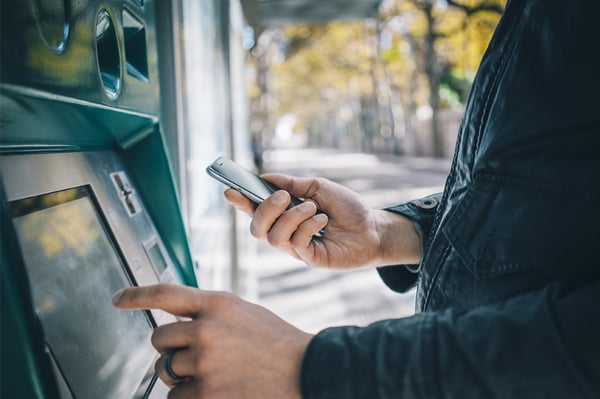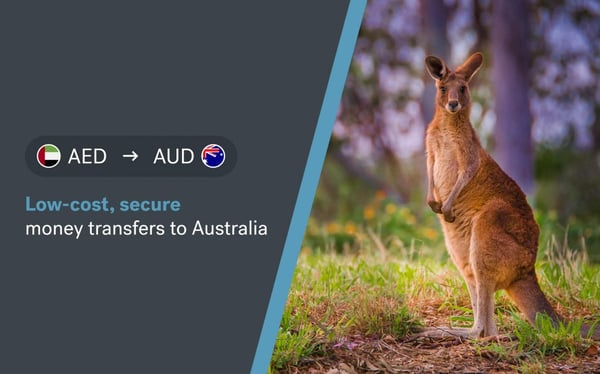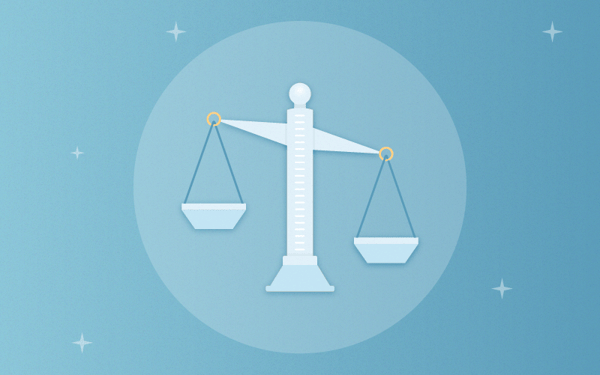If you follow the latest trends in finance, then you may be aware of Open Banking, which falls under the revised Payment Services Directive (PSD2) set out by the European Banking Authority. And if you've never heard of it, then you're not alone. A survey by Which? found that 92% of respondents were unaware of the Open Banking movement.
What is Open Banking? It's a concept sparked by European legislation that gradually came into effect between January 2018 and September 2019 and is gaining momentum.
It has the potential to disrupt the way we manage our finances, so it's worth taking the time to research what it means for you and your money. We've put this article together to run through the basics: what Open Banking is, how it could benefit you, as well as any security concerns to consider.
Sending money overseas? Save money when you send money with CurrencyFair's competitive exchange rates.
What does Open Banking mean?
First, a (very) short history of European banking legislation. The PSD2 is the EU regulation that underpins a new way of managing financial data. At its core, the PSD2 aims to rebalance the power dynamic within the industry, introducing more competition and innovation to the world of personal finance.
At its most basic level, PSD2 enables customers to share their bank account information securely between banks and authorised technology providers. Under PSD2, the biggest banks within the UK and Europe are required to release their data around accounts, products and services. Within the UK, the term Open Banking is widely used to refer to the PSD2 directive - so Open Banking and PSD2 are more or less the same thing.
The movement signals endless possibilities. Customers using Open Banking might be able to access all their bank accounts, credit cards and savings accounts from one app or dashboard, making it easier for them to understand lifelong money habits and compare providers.
For example, prior to Open Banking, a customer might have opened a bank account at the age of 18 and stayed loyal to that bank their whole life, regardless of whether the products offered were the most appropriate or competitive in the market. But in an Open Banking model, they can analyse their spending and saving patterns and find opportunities to cut costs or switch providers.
Companies offering Open Banking services must be authorised, for example, customers are able to check whether a UK-based organisation is on the list of UK regulated providers here.
What is Open Banking in the UK?
Open Banking forces the nine largest current account providers in Great Britain and Northern Ireland to release their data so that it can be shared more easily between authorised third-parties online.
The movement signals endless possibilities. Customers using Open Banking might be able to access all their bank accounts, credit cards and savings accounts from one app or dashboard, making it easier for them to understand lifelong money habits and compare providers.
For example, before Open Banking, a customer might have opened a bank account at the age of 18 and stayed loyal to that bank their whole life, regardless of whether the products offered were the most appropriate or competitive in the market. But in an Open Banking model, they can analyse their spending and saving patterns and find opportunities to cut costs or switch providers.
Is Open Banking legal in the UK?
Open banking is regulated in the UK by the Financial Conduct Authority (FCA). Companies offering Open Banking services must be authorised. For example, customers can check whether a UK-based organisation is on the list of UK regulated providers.
Which UK banks use Open Banking?
The nine banks that were obligated to share their data under Open Banking are HSBC, Barclays, RBS, Santander, Bank of Ireland, Allied Irish Bank, Danske, Lloyds and Nationwide. However, ​most UK banks are now also signed up to Open Banking, with the exception of some smaller banks. A list of all UK banks signed up for Open Banking is available on the UK Open Banking website.
How does Open Banking benefit me?
Some of the purposes of Open Banking are to make it easier for customers to:
-
Save money.
-
Borrow money.
-
Make payments.
Saving money
Using Open Banking, customers can access data to make informed decisions about switching suppliers or cutting spending in a certain area.
For example, if you're in the market for a gas provider, your data could be analysed to find the best supplier for your specific consumption rate. Or, if you have something to save for, you could set up a financial goal and track your progress - all within the same dashboard you use to manage your bank accounts.
With all account details and spending behaviour available from one place online, customers have total visibility and therefore control of their money, making it easier to understand where savings could be made.
Borrowing money
When someone applies for a loan, they usually need to show proof of income and spending history. Open Banking makes it much easier to share this information without the hassle of entering personal details each time.
Making payments
The technology used in Open Banking also allows customers to pay directly through their bank account, rather than using a credit or debit card. This means that payments are quicker, easier, more reliable and secure as there's no need to enter any card details.
For CurrencyFair customers, this means you'll be able to make a GBP deposit into your CurrencyFair account by logging into your banking portal from the CurrencyFair app and instructing a transfer to be made. It gives you greater control over your data and allows you to authenticate payments securely and, in most cases, almost instantaneously.
How can I access Open Banking?
To take advantage of Open Banking, you need to opt in to share some of your financial data at the time of registering for a new service.
For example, let's say you want to access a third party tool that lets you see all account details from numerous banks and credit cards in one dashboard. In that case, you'll need to check that your providers offer Open Banking. Once you've established this, you'll need to give permission for this provider to access your accounts to take part in this service.
You're always in complete control of how much data you share, whether from current accounts, savings accounts, credit cards, or electronic money accounts. Specific data points that you decide to share may include:
-
Your account details (for example, your balance and account name).
-
Regular payment details, such as standing orders and direct debits.
-
Transactions.
-
Account features and services, such as fees and overdraft payments.
Providers should only ask for permission to access the data they need to carry out the service they're offering. If you prefer not to share specific data then you're under no obligation to do so, however you may be unable to access certain services as a result.
Is Open Banking safe?
Open Banking uses trusted API (application programming interface) technology to share data. And with the introduction of the PSD2, organisations must now use strong customer authentication to check the identity of both user and service.
Open Banking providers must also comply with all regulations and get authorised in their own country, for example by the Financial Conduct Authority (FCA) in the UK. So from a technical point of view, Open Banking is at least as safe as online banking.
However, any transfer of sensitive data brings the risk of scammers. Before you sign up to an Open Banking service you should check that the organisation is legitimate, for example with a regulating body such as the FCA. Make sure you understand what data you're agreeing to share and why.
For example, you should never be asked to enter your banking login details or password with anyone except the bank. And you can always withhold permission - don't let anyone pressure you into sharing your data.
If something does go wrong with a transaction, your bank should support you in getting a refund. And if you suspect that your data is being used inappropriately, you should alert the appropriate data protection authority, for example, the Information Commissioner's Office in the UK, or the Data Protection Commissioner in Ireland.
Open Banking and CurrencyFair
Open Banking helps you move and manage money faster and easier by letting you authorise your bank to share payment information with third parties, like CurrencyFair.
This means you'll be able to make a GBP deposit into your CurrencyFair account by logging into your banking portal from the CurrencyFair app and instructing a transfer to be made. It gives you greater control over your data and allows you to authenticate payments securely and, in most cases, almost instantaneously. The other benefits are:
-
Simplicity - it removes the need to manually set up a payee and to add a transfer reference.
-
Speed - it takes just two minutes to instruct the transfer. Once it's successfully authorised, the funds for the deposit will be on the way to us and generally arrive within minutes.
-
Security - this end-to-end process is encrypted, meaning your bank account details will never be shared with CurrencyFair.
Sending money overseas? Save money when you send money with CurrencyFair's competitive exchange rates.
This information is correct as of August 2022. This information is not to be relied on in making a decision with regard to an investment. We strongly recommend that you obtain independent financial advice before making any form of investment or significant financial transaction. This article is purely for general information purposes. Photo by Richard Balog on Unsplash.













